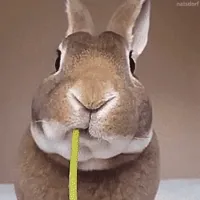Why you might want to leave those dandelions alone
By BEV BETKOWSKI
 Nothing can threaten a velvety green
lawn like vagabond dandelions—but it isn’t all bad, says a University of
Alberta gardening expert.
Nothing can threaten a velvety green
lawn like vagabond dandelions—but it isn’t all bad, says a University of
Alberta gardening expert.
In fact, people may want to actually
welcome the fluffy yellow blooms into their yards, said Ken Willis, head of
horticulture at the U of A Botanic Garden.
“There’s starting to be a lot more
argument that they should be kept because of what they can do for pollinators.
Ecologically they are becoming very important as a food source for domestic and
wild species of bees, particularly in early spring because they grow so soon.
Butterflies and moths also feed on them as a source of sugar, and some species
of birds feed on dandelion seeds,” said Willis, who leaves room for the hardy
plant in natural areas in the botanic garden.
Though classed as a weed, the
dandelion, a member of the daisy family, isn’t noxious—defined as causing a threat
ecologically, economically or to public health.
Instead, the plant’s biggest fault is that it spreads easily through the seeds carried on the wind by its trademark gray fluff.
Instead, the plant’s biggest fault is that it spreads easily through the seeds carried on the wind by its trademark gray fluff.
“They take over the space that other plants would move into and they’re also very effective at germinating in areas where other plants can’t grow because of poor soil compaction or dryness. That’s why they are so prevalent on the landscape—they’re tough,” Willis said.
Gardeners either want them in the
yard or they don’t, and “both sides are correct,” he added.
“I think psychologically, in areas
like parks and playgrounds, people want to see big fields of green and that’s
their idea of a perfect landscape, and if it’s your yard, and you want that, go
ahead and do it.”
To get rid of them, either hoe them
out or pull them by hand for areas smaller than a half-acre, being sure to also
dig out the plant’s large taproot. For infestations larger than that, call in a
lawn care company, Willis advised.
If you’re making dandelions part of
the summer landscape, consider the idea of “playability”—managing the level of
dandelions to the intended use of your yard and garden, Willis advised.
“With municipal sports fields and
parks, you want to prevent injuries to increase the playability, so dandelion
control would be important for that purpose.”
The best way to use them in a yard,
without squeezing out flower beds and infesting lawns, is in the vegetable
garden, where they belong, he said.
“Dandelions were brought to North
America from Europe and Asia as a vegetable, so they have many culinary uses.
They’re high in vitamins and the leaves are good in salads, the taproot can be
ground into a coffee substitute and the flowers make wine. Grow it like lettuce
and harvest it before the flowers bloom,” Willis suggested.